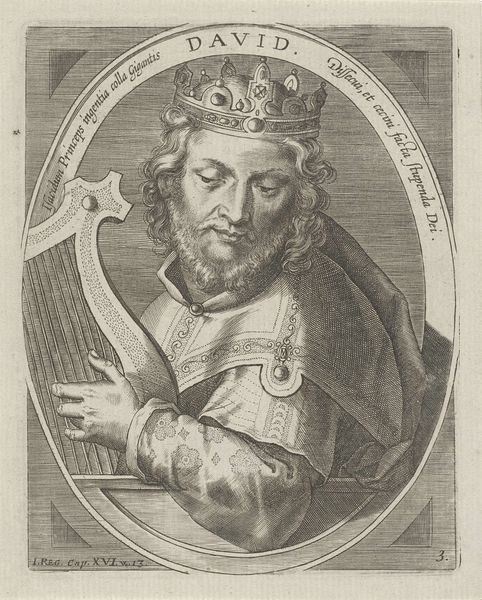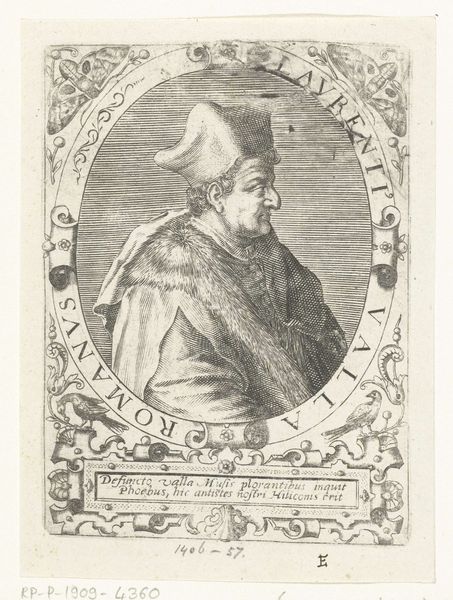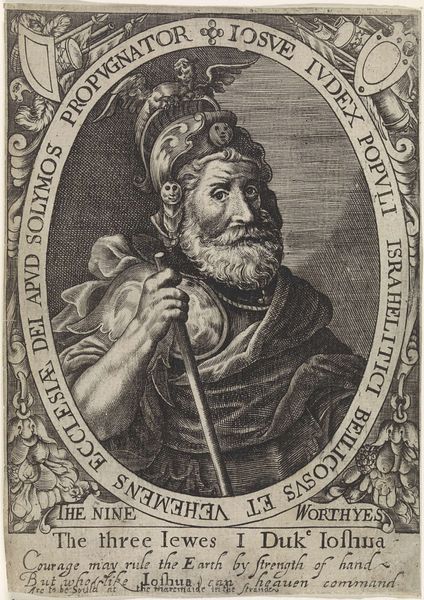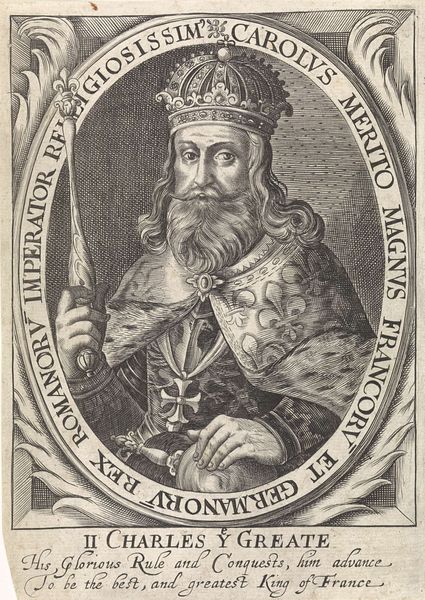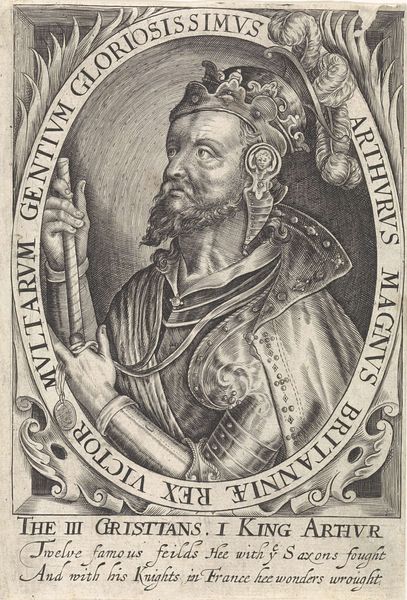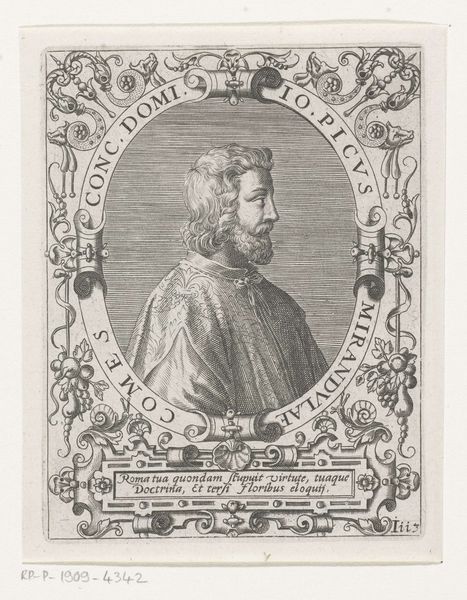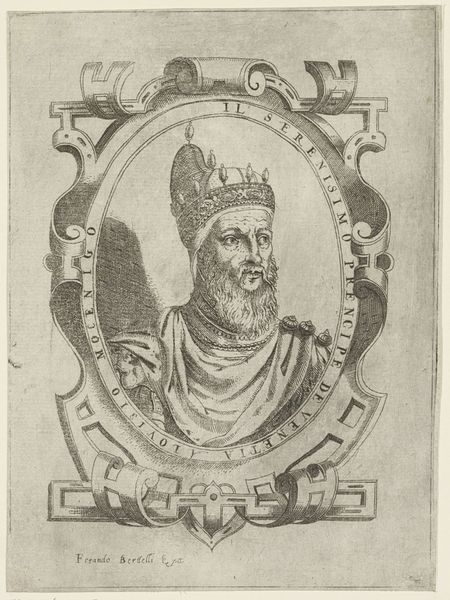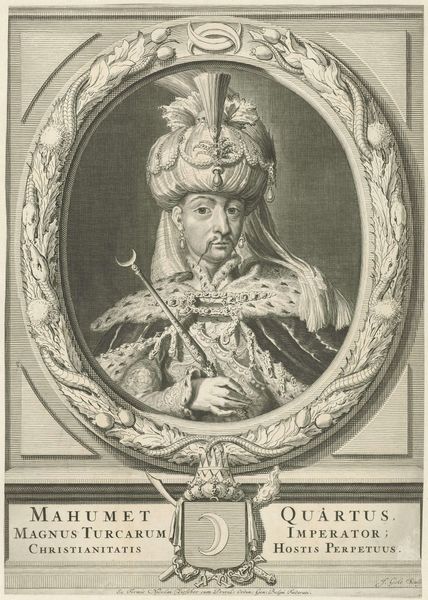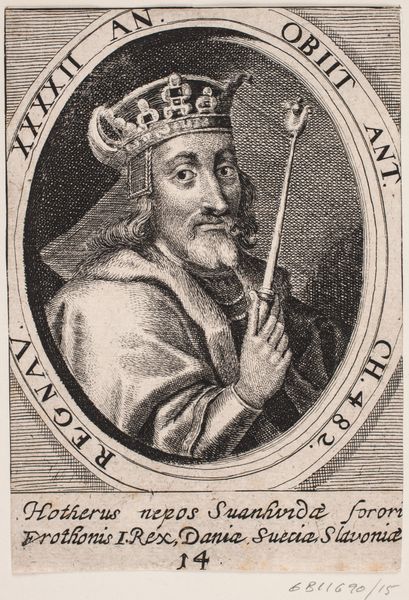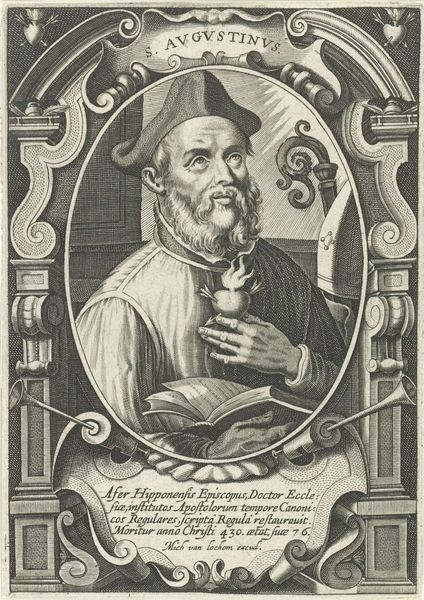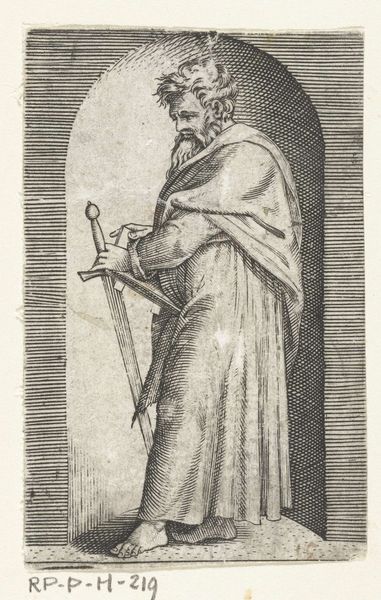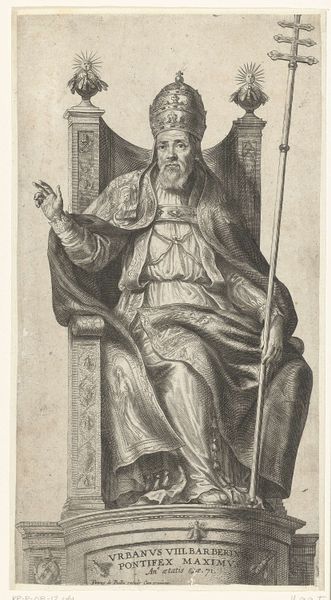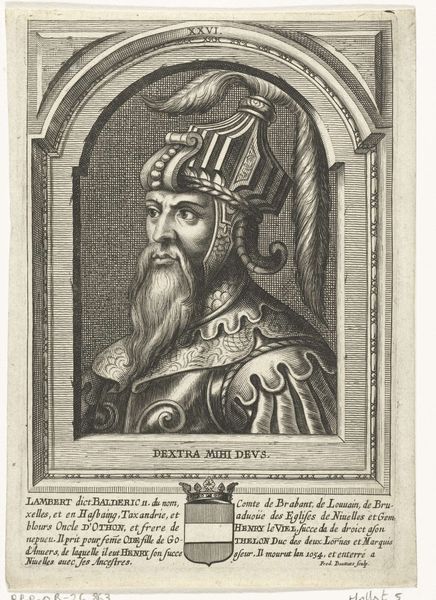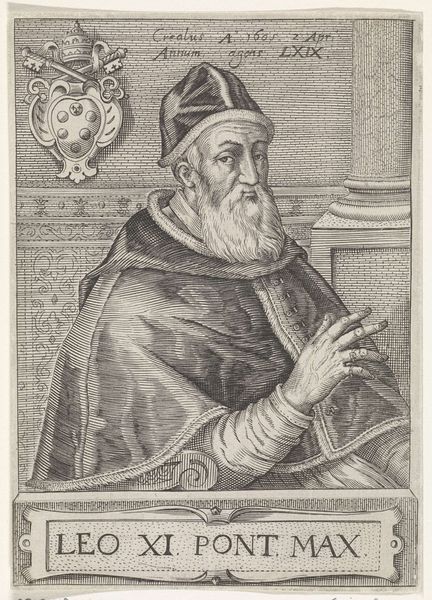
print, engraving
#
portrait
#
baroque
# print
#
old engraving style
#
limited contrast and shading
#
pen work
#
history-painting
#
engraving
#
columned text
Dimensions: height 178 mm, width 128 mm
Copyright: Rijks Museum: Open Domain
Curator: What strikes me first about this print, titled "Koning David als een van de negen helden" or "King David as one of the nine heroes," by Willem de Passe, made between 1621 and 1636, is its incredibly ornate detail, typical of Baroque engravings. The lines are so fine. Editor: It gives the piece a soft, almost dreamlike quality, even with the crispness of the lines. You've got David looking regal, of course, holding his harp, and the inscription in Latin…It projects a really idealized image of kingship. I can spot quite a lot of meaningful images on the edges as well. Curator: Indeed! Let's not overlook the historical context here. During the Baroque era, representations of biblical figures like David were often used to legitimize the power and authority of earthly rulers. These prints circulated widely, solidifying certain narratives. Editor: Absolutely. David's crown isn't just any crown; it signifies divinely sanctioned authority. He's not merely a king, but "Rex Israelitarvm et Propheta"–King of the Israelites and a Prophet. Then look at the figures on either side of the frame; the lion is easily recognizable for strength, valor, and justice in this type of portrait, as are drums and banners above him in the roundel. These types of cultural visual signifiers worked so effectively! It gave immediate meaning. Curator: It's intriguing how de Passe chose to portray David as one of the "nine worthies," placing him in the company of legendary figures from history and literature. It elevated his status and connected him to a broader tradition of heroism and virtue. The way this iconography was circulated among courts through these prints meant they weren't only artwork, but a crucial part of royal cultural infrastructure. Editor: Consider too, David with the harp, known for music that soothes and pacifies as well as praising God. This imagery isn't just about power, it's about a divinely guided sensitivity, all tied to kingship, and therefore projecting legitimacy to existing European rules at the time, as you say. It serves as both portrait and symbol simultaneously. The soft pen work does lend a gentler aura too, and you are encouraged to find deeper meanings in the art, as though looking into a visual document or secret. Curator: Well said. It truly is a testament to the power of images in shaping historical and political narratives. Editor: It definitely sheds light on how enduring symbols help create continuity over generations.
Comments
No comments
Be the first to comment and join the conversation on the ultimate creative platform.
